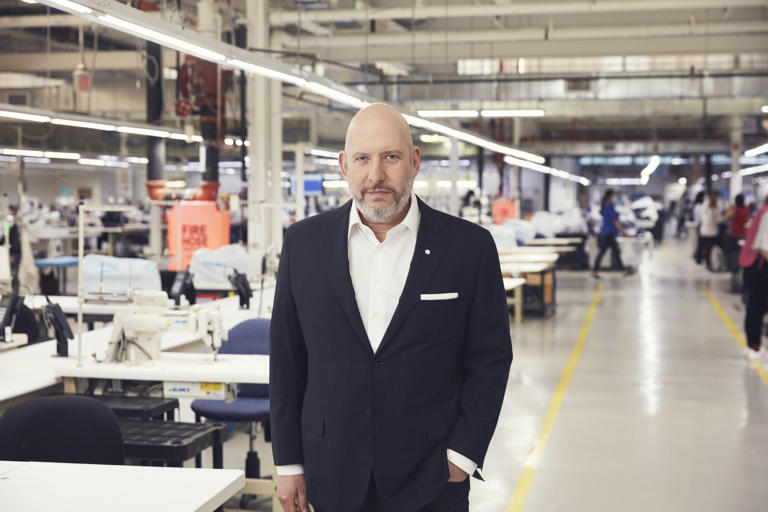Dani Reiss was just 27 when he took the helm of his grandfather’s cold-weather clothing company, Canada Goose, in 2001. Similar to other heirs like those of Arnault and Murdoch, Reiss assumed leadership of the $1.6 billion business long before the average worker. These so-called “nepo babies” or “nepo CEOs” often face skepticism about their capabilities, a sentiment Reiss is familiar with. He admitted to Fortune that it took him about a decade to realize he was a competent leader.
Reiss graduated from the University of Toronto with a degree in English literature and philosophy, aspiring to become a writer rather than joining the family business, then known as “Snow Goose.” Initially, he saw his involvement as temporary, planning to spend just a year at the company before traveling and writing short stories. However, within four years, Reiss was running the company, taking over from his father, David Reiss, who was eager to retire.
Since then, Canada Goose has transformed from a modest business generating a few million dollars annually into a billion-dollar brand. Its high-end parkas, priced at over $1,200, are now popular worldwide, including in warmer climates like Miami and soon Australia, and are worn as streetwear by celebrities and Gen Zers.
Despite his achievements, Reiss’s transition to the top role was met with doubt, both from himself and others. Initially, many employees who were becoming successful left the company, and Reiss struggled to embrace his CEO title, opting for business cards that labeled him as a marketing manager or international sales manager. It was only after the brand grew significantly that he felt justified in using the CEO title, particularly when dealing with bankers and decision-makers.
Reiss doesn’t intend to follow the tradition of passing the company to one of his two children, at least not in the near future. He believes the business, now with shareholders and a global presence, is vastly different from the small company he joined in the late 90s. He advises that anyone aspiring to lead their parent’s company must prove their worth through hard work and intelligence.
Reflecting on his journey, Reiss emphasizes the importance of being the hardest-working person in the business to earn one’s place. He jokes about the possibility of his children joining the business, insisting that they would need to be both smart and hardworking to succeed.
This story highlights the challenges and expectations faced by heirs in leadership roles, underscoring the importance of dedication and proving one’s capability in a competitive business environment.
Dani Reiss’s ascension to the leadership of Canada Goose at the young age of 27 was marked by initial reluctance and significant challenges. Much like the heirs of other prominent business families, such as the Arnaults and Murdochs, Reiss stepped into a role that many viewed as prematurely handed to him. This early leadership, often surrounded by skepticism, required Reiss to not only learn the ropes quickly but also to earn the respect and trust of those within and outside the company. This sentiment of underestimation is common among “nepo babies” or “nepo CEOs,” who must prove that their leadership is based on merit rather than inheritance.
When Reiss took over, Canada Goose, then known as “Snow Goose,” was a relatively small company, generating a modest revenue of a couple of million dollars per year. Reiss’s initial involvement was more of a stopgap measure, intended to be a short stint before he pursued his passion for writing. However, within a few years, Reiss found himself fully immersed in the company, taking over from his father, David Reiss, who was eager to retire. Under his leadership, Canada Goose experienced exponential growth, evolving from a niche brand into a global powerhouse with revenues soaring to $1.6 billion. The brand’s expansion into warmer climates and its adoption as a fashion statement among celebrities and younger generations marked a significant shift in its market positioning.
Despite the rapid growth and success of Canada Goose, Reiss’s journey was not without personal and professional hurdles. The initial phase of his leadership saw many early employees leaving, and Reiss himself was hesitant to embrace the CEO title. This reluctance to fully own his leadership role was reflective of the broader skepticism he faced. It wasn’t until the company reached a substantial size and gained importance that Reiss felt comfortable identifying as the CEO, particularly when engaging with bankers and other key stakeholders.
Looking ahead, Reiss does not envision his children taking over the business anytime soon. He acknowledges the significant transformation Canada Goose has undergone, with its current structure and market presence vastly different from the small operation he inherited. This realistic approach to succession planning highlights the importance of capability and preparedness in leadership transitions. Reiss’s advice to potential successors is clear: proving one’s worth through hard work and intellect is essential to earning and maintaining a leadership position.
Dani Reiss’s story is a testament to the challenges and opportunities that come with leading a family business. His journey from a reluctant temporary leader to the CEO of a billion-dollar brand underscores the importance of perseverance, strategic vision, and the ability to adapt. For other “nepo CEOs” or heirs stepping into leadership roles, Reiss’s experience offers valuable insights into navigating skepticism, proving one’s capability, and driving business growth in a competitive environment.
